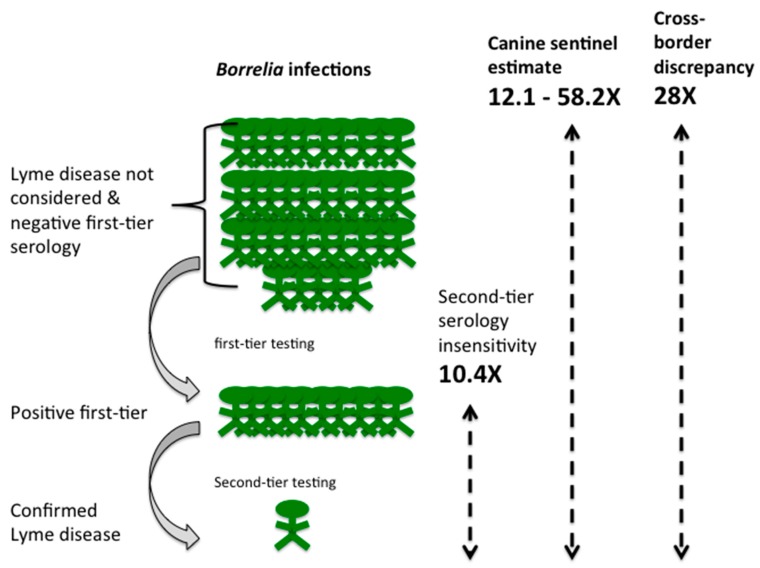Figure 4.
Discrepancy between reported and predicted Lyme disease cases using New Brunswick (NB) as a case study. For every confirmed case recorded (green person, bottom row) there is both a deduced 10.4-fold loss of diagnoses due to failure to obtain positive second-tier serology (9.6% of cases reported; green people, middle row). No cases defined as probable cases, which would include diagnoses of acute Lyme disease without the need for serology, have been reported for NB. Failure to consider Lyme disease as a diagnosis and/or negative first-tier serology results in additional loss of detected infection (green people, top row). Cross-border incidence values indicates that this loss is 28-fold (3.6% of cases detected overall) and analysis of canine sentinel data provides an estimate of 12.1 to 58.2-fold loss (1.7% to 8.3% of total cases detected; the average value is depicted in the figure). Overall, this analysis indicates that for every person with a reported case of Lyme disease, there are approximately 30 other people with Lyme disease excluded by serological insensitivity, failure to consider Lyme disease as a diagnosis or failure to report acute Lyme disease cases.

